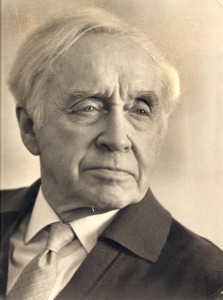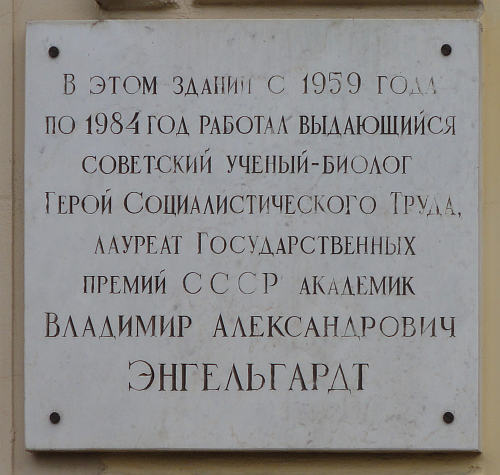Vladimir Alexandrovich
Engelhardt
1894-1984

Vladimir Alexandrovich Engelhardt was the director of the Institute of Radiation and Physical-Chemical Biology of the Academy of Sciences of the USSR, Academician of the Academy of Sciences of the USSR, Hero of Socialist Labor. He graduated from the medical faculty of Moscow State University in 1919 and then was mobilized into the Red Army, where he worked as a tow truck doctor, then as a senior doctor of the cavalry brigade. Vladimir Alexandrovich Engelhardt devoted himself to scientific and pedagogical activities after returning from the ranks of the Red Army. He worked as a researcher and the head of the Department of the Biochemical Institute of the People’s Commissariat of Health of the RSFSR (now it is the A.N. Bach’s Institute of Biochemistry) in 1921-1929. He was the appointed director of the Institute of Radiation and Physical-Chemical Biology of the Academy of Sciences of the USSR in 1959. In 1955-1959 he was the Academician-Secretary of the Department of Biological Sciences of the USSR Academy of Sciences. His main works are devoted to the exchange of organic phosphorus compounds, their role in the energy and physiological functions of the cell, the study of the relationship of energy processes and mechanical properties of muscle proteins. This work was awarded the Stalin Prize in 1943. He put the following experiment: a kind of muscle fibers was created from myosin filaments, in the presence of ATP, these filaments changed their plastic properties, «contracted» like muscles. This discovery of the scientist was confirmed by scientists from many countries. Vladimir Alexandrovich Engelhardt formulated «the principle of the unity of chemistry, function and structure». The staff of the Institute of Molecular Biology deciphered the primary structure of two transport RNAs, determined the sequence of amino acids in a large protein molecule, and developed new methods for structural studies of nucleic acid proteins under his leadership (1965).
Address: Moscow, Vavilova str., 32, p. 1

